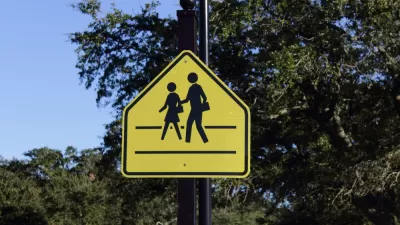The recent release of the American Association of State Highway and Transportation Officials’ (AASHTO) 2012 Update to the Guide for Development of Bicycle Facilities sparked an interesting discussion on the Association of Pedestrian and Bicycle Professional’s (APBP) email listserv.
The recent release of the American Association of State Highway and Transportation Officials' (AASHTO) 2012 Update to the Guide for Development of Bicycle Facilities sparked an interesting discussion on the Association of Pedestrian and Bicycle Professional's (APBP) email listserv.
Coursing through the thread was a feeling of angst directed not at the Guide's content per se, but towards the method used in its creation and distribution. Bicycle planner or not, this discussion should be of some interest across the planning field because it highlights the emergence of two fundamentally different approaches to creating and distributing professional guidance.
For simplicity, let's refer to them as the static and dynamic models.
Static Professional Guidance Model
The static model is characterized by, but certainly not limited to, the aforementioned AASHTO bike guide.
Last updated in 1999, the third edition of AASHTO's bike guide began showing its age in the mid-2000s when an increasing number of cities endeavored to utilize more advanced bicycle planning and design techniques. Recognizing that the field was evolving quickly, a survey regarding the need to update the Guide was issued to professionals in 2004. Eight years later, the fourth edition is finally available (in print and as a "single-user" PDF). The depth of its content is, without question, a huge leap forward from its predecessor.
Yet, the Guide costs almost $150 for non-AASHTO members ($120 for members). This price point, as expressed by a few in the APBP thread, is too expensive and limits its accessibility for an ever-growing number of professionals, advocates, researchers, and students working to make cities more bicycle-friendly.
The AASHTO Guide also has a very small web presence and there remains no option to preview the material before making a purchase. But if you or your organization does decide to pony up the cash, please consider the actual print edition because the single-user PDF is very difficult to share digitally with your colleagues.
With today's fast moving, open Internet culture, throwing up such professional hurdles only leads the potential user to the conclusion that the 2012 Guide can only be accessed like it's 1999.
So what's the alternative?
Dynamic Professional Guidance Model
To keep the subject matter consistent, the 2011 National Association of City Transportation Officials' (NACTO) Urban Bikeway Design Guide is an example of the emergent dynamic model.
NACTO's bikeway guide stands in purposeful opposition to AASTHO's static model. Users are able to access all of the content via an easy-to-use web platform. The online version is also fully networked, with references and sources hyperlinked so that the user may follow the flow of information and easily jump deeper into or between topics. As for cost, a free unencrypted PDF is currently available for downloading and sharing with colleagues. The print version costs $40-a far more accessible price point for potential users.
The NACTO Guide is also well illustrated using a graphic language that may be understood by the technocrat and layperson. The actual content includes the highly sought after guidance for the design and application of the many facility types ignored by AASHTO's latest guide, including cycle tracks, bicycle boxes, and bicycle signals.
Impressivley, NACTO is already set to release an update to the Guide in September, a mere 11 months after the release of the first edition. Such a dynamic and progressive approach inspired Darren Flusche of the League of American Bicyclists to state in a recent Streetsblog article that "NACTO has left AASHTO behind."
NACTO is certainly not alone in providing a more accessible, approach to professional guidance. Other recent examples include the Los Angeles County Model Design Manual for Living Streets, the Open Streets Project Guide (full disclosure: this is a project my firm created in collaboration with the Alliance for Biking & Walking) and the model SmartCode, which may be one of the earliest open source planning tools.
Moving Forward
The quality of the work included in the AASHTO bike guide may be very high, but its professional influence and utility may begin to wane as municipal planners, designers, engineers, public policy makers, and advocates come to expect professional guidance be less static, and more dynamic. Nimble organizations, like NACTO, now have the tools to disrupt the static model with increasingly open, web-based platforms that are faster and easier to use and distribute. As this becomes more commonplace, other, values-based organizations must figure out how to stay professionally relevant by continuing to:
1) Serve
2) Educate
3) Adapt
AASHTO, and many other organizations like it, capably cover the first two bases, but need to be careful not to miss the boat on the third.

Alabama: Trump Terminates Settlements for Black Communities Harmed By Raw Sewage
Trump deemed the landmark civil rights agreement “illegal DEI and environmental justice policy.”

Planetizen Federal Action Tracker
A weekly monitor of how Trump’s orders and actions are impacting planners and planning in America.

The 120 Year Old Tiny Home Villages That Sheltered San Francisco’s Earthquake Refugees
More than a century ago, San Francisco mobilized to house thousands of residents displaced by the 1906 earthquake. Could their strategy offer a model for the present?

Opinion: California’s SB 79 Would Improve Housing Affordability and Transit Access
A proposed bill would legalize transit-oriented development statewide.

Record Temperatures Prompt Push for Environmental Justice Bills
Nevada legislators are proposing laws that would mandate heat mitigation measures to protect residents from the impacts of extreme heat.

Downtown Pittsburgh Set to Gain 1,300 New Housing Units
Pittsburgh’s office buildings, many of which date back to the early 20th century, are prime candidates for conversion to housing.
Urban Design for Planners 1: Software Tools
This six-course series explores essential urban design concepts using open source software and equips planners with the tools they need to participate fully in the urban design process.
Planning for Universal Design
Learn the tools for implementing Universal Design in planning regulations.
Clanton & Associates, Inc.
Jessamine County Fiscal Court
Institute for Housing and Urban Development Studies (IHS)
City of Grandview
Harvard GSD Executive Education
Toledo-Lucas County Plan Commissions
Salt Lake City
NYU Wagner Graduate School of Public Service






























